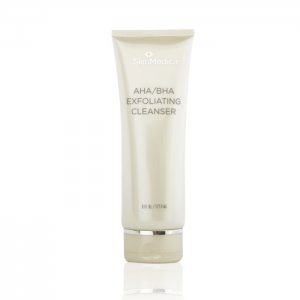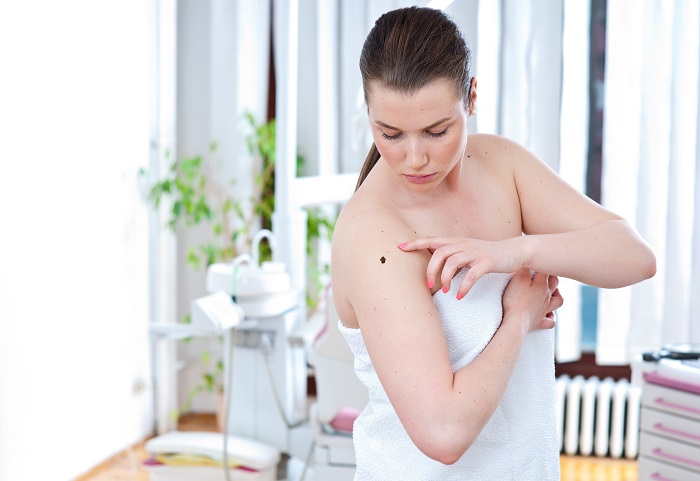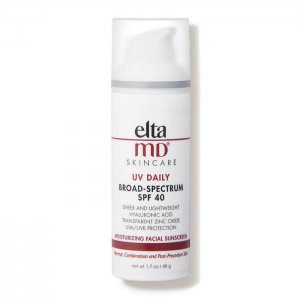It may not feel like it yet, but spring is just around the corner. If you’ve been planning ahead to spring clean your home, don’t forget to include your skincare. Most people don’t change their skincare routine very often or really think much about it. If you’re already cleaning out the cabinets, take a few minutes to go through your skincare products and routine to start fresh this spring. In this blog, we review five simple steps for spring cleaning your skincare routine.
Step 1 – Cleaning Out the Cabinets
When is the last time you looked at your skincare products? Items like face wash and body wash or moisturizers usually get used up and replaced, but other products can linger in the back of the cabinet for years, especially if you receive skincare products as gifts. As you’re spring cleaning, throw out any expired products. If you have unopened and unexpired items that you won’t use because they’re not right for your skincare needs, consider donating them to local shelters or nursing homes.
In addition to getting rid of the skincare products you’re not using, spring cleaning is also a good time to clean and replace your skincare tools. Makeup brushes, hairbrushes, exfoliators, and other items need to be cleaned and replaced regularly. You should really be cleaning makeup brushes and sponges at least once a week, using a little bit of soap and water. If you don’t wear makeup very often, you may be able to keep your makeup brushes for a year, but if you are a daily makeup wearer, you should replace the brushes about every three months or anytime they begin to show signs of wear (shedding bristles, holes appearing in sponges, etc.).
For hairbrushes and combs, use a little shampoo to clean the bristles once a month. For plastic brushes and combs, you can soak them in shampoo and water for a few minutes, rinse them, and place them bristles down to dry. For wooden-handled brushes, only submerge the bristles of the brush. Then, rinse and dry right away. If you have hair products or other buildup on the brush, use a toothbrush to clean the bristles and base of your hairbrush. Most people don’t replace their hairbrushes often enough. You should get a new hairbrush once or twice a year.
For items like exfoliators, tweezers, and other skincare tools, you should follow the care instructions from the manufacturer. These items can be made from a variety of materials that will all react differently to water and cleaning products.
Step 2 – Protecting Skin from Sun Damage
Spring means sunshine and more time outdoors enjoying the warm weather, so it’s a great opportunity to review your sun protection routine. Most sunscreens expire after six months, so if you’ve had the same bottle of sunscreen in your cabinet for quite a while, it’s time to get some new products. You should apply sunblock to any part of the body that will be exposed to sunlight every day. For most people, this means using sunscreen on their face, neck, and hands daily. Many facial moisturizers have sunscreen built right in. If you’re going to be outside for longer periods, you should make sure to reapply your sunscreen regularly (at least every two to four hours).
Shop all sunscreens on dermskincare.com »
Step 3 – Taking Care of Your Face & Body
As you’re going through your current skincare products, it may be a good opportunity to review your routine to make sure you’re using the right products and applying them correctly. Each person should work with a dermatologist to develop a customized skincare routine that fits their individual needs, but some basic recommendations are detailed below.
Daytime Face Care Routine

Gently scrub away dead skin and improve the appearance of skin tone and texture with SkinMedica AHA/BHA Exfoliating Cleanser »
Daytime skincare is all about preparation. You’re getting your skin ready to face the day, and your products and treatments should reflect this.
A good, basic morning routine to care for your face might look like this:
- Cleansing – Use a gentle cleanser to remove oils and dead skin cells from your face.
- Treating – If you have acne-prone skin, hyperpigmentation, signs of aging, or other skin concerns you want to address, apply spot treatments, as recommended by a dermatologist. Remember, daytime skincare is about preparing skin for the day ahead, so daytime treatments are usually preventive in nature, working to keep skin safe and healthy.
- Moisturizing – Choose a product that will help your skin retain moisture throughout the day, but in most cases, your daytime moisturizer should be light to avoid clogging pores.
- Protecting – Many moisturizers have built-in sunscreens, but if yours doesn’t, you should apply a light sunscreen once your moisturizer has some time to absorb.
- Enhancing – Allow your moisturizer and sunscreen to fully absorb into the skin before applying makeup. This usually takes about ten or fifteen minutes. Use cosmetics that are gentle on the skin, and always apply cosmetics with clean brushes. Applying a primer before using cosmetics can also help to protect skin from any chemicals or harsh ingredients in these products.
Shop all products on dermskincare.com »
Nighttime Face Care Routine
Nighttime skincare is all about rejuvenation. After a long day, your skin deserves a little pampering.
A simple nighttime routine to care for your face might look like this:
- Cleansing – If you use cosmetics, make sure you thoroughly remove these products to avoid clogging pores. After removing makeup, use a gentle cleanser to remove any remaining makeup, oils, and other grime accumulated on the skin through the day.
- Treating – You can use treatments similar to those used in the morning or have a different plan for nighttime skincare. At the end of the day, you should be, for the most part, using moisture-rich, soothing products to restore nutrients and replenish your skin. Talk to your dermatologist about the right evening treatments to achieve specific skincare goals.
- Moisturizing – At nighttime, you should use a richer, cream-based moisturizer to replace the moisture lost throughout the day and lock it in overnight. You may also want to apply eye creams, lip masques, and other deep moisture-renewing products right before bed.
Daily Body Care Routine
In addition to caring for the skin on your face, it’s just as important to make sure the skin on the rest of your body stays healthy.
Everyone has different skincare needs, but a good body care routine should include:
- Cleansing – Clean your skin using a gentle cleanser at least once each day. Avoid overly hot water in the shower or bath, as this strips moisture from the skin.
- Moisturizing – Immediately after showering or bathing, apply body lotion to lock in moisture. You should apply moisturizer before bed to areas that dry out more quickly like the hands, feet, and elbows. Additionally, you may want to use a hand cream throughout the day after washing your hands.
- Protecting – You should apply sunblock to your hands, neck, and other parts of the body that will be exposed to sunlight (anything not covered by your clothes) every day.
- Treating – If you have chronic skin conditions like eczema, psoriasis, or acne that affect your body, talk to a dermatologist about the ideal treatment plan. You may need to include a special body wash, topical ointment, or lotion as part of your daily routine to minimize flareups.
Shop all products on dermskincare.com »
Step 4 – Performing Skin Self-Exams

Depending on the individual’s risk for skin cancer and other concerns, self-exams should be performed monthly or every other month. During these exams, patients should study all areas of skin from head to toe, including areas that are often overlooked like the scalp and nail beds, checking for any new or changing spots.
While any change in skin tone or texture should be noted, it’s especially important to check for the ABCDEs of skin cancer:
- A – Asymmetry – One side of a lesion is different from the other
- B – Border – The edges of a lesion are not smooth, but instead, appear scalloped, jagged, or otherwise uneven
- C – Color – May vary in color within the lesion itself or vary in color from other similar spots
- D – Diameter – Lesions that are larger around than a pencil eraser
- E – Evolution – Lesions that are new or changing rapidly
Step 5 – Visiting with Your Dermatologist
Whether you have sensitive skin, a chronic skin condition, you notice something concerning during a self-exam, or you just want to keep your skin looking and feeling great, you should visit your dermatologist once a year. These annual visits ensure any concerns are addressed in the earliest stages and allow you to stay on top of caring for your skin.
If it’s been more than a year since your last trip to see us at U.S. Dermatology Partners, it’s time to schedule a visit. Fill out our online scheduling request form or reach out to your local practice to get started. We look forward to seeing you soon.
Find a location near me
or




